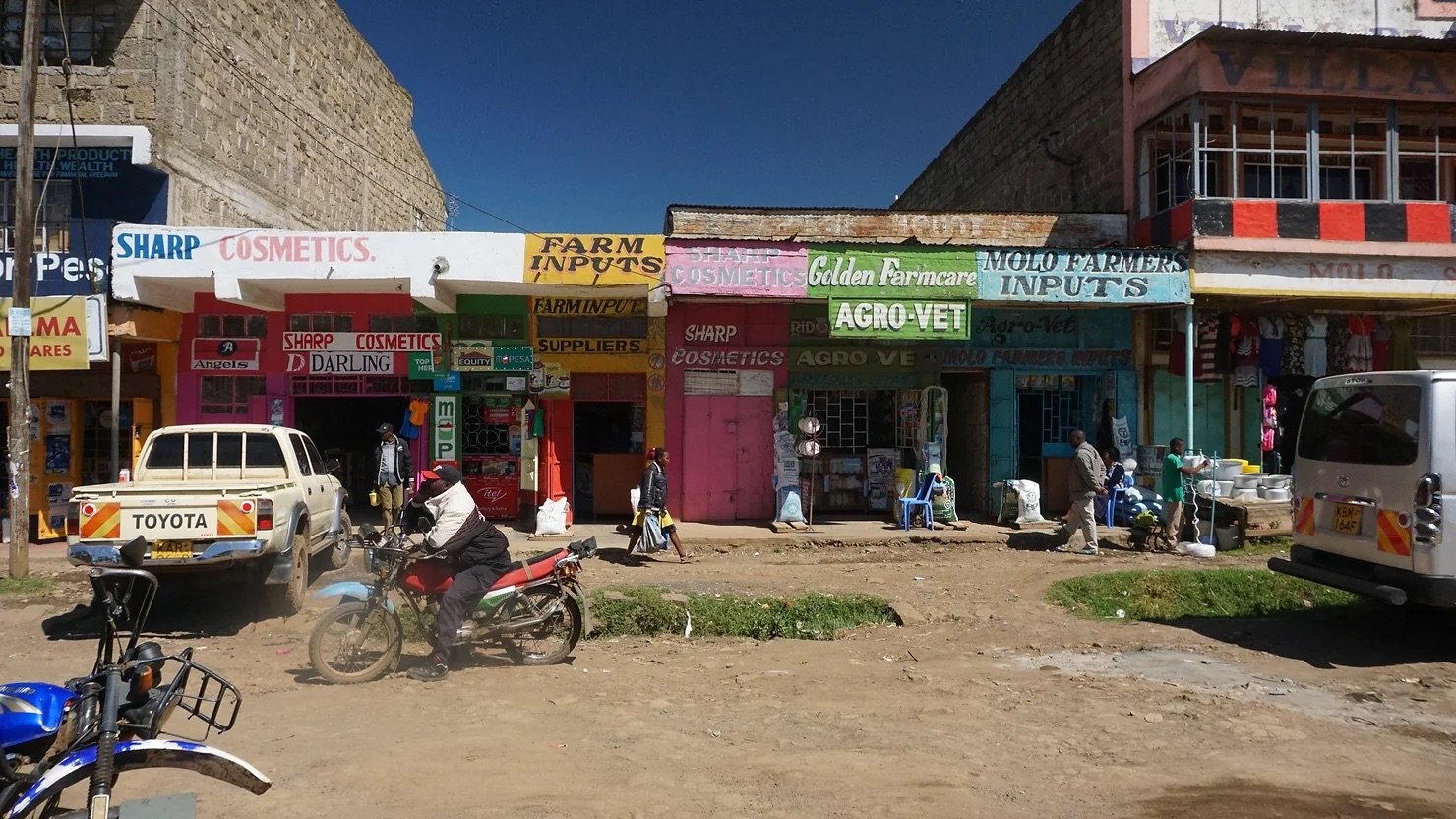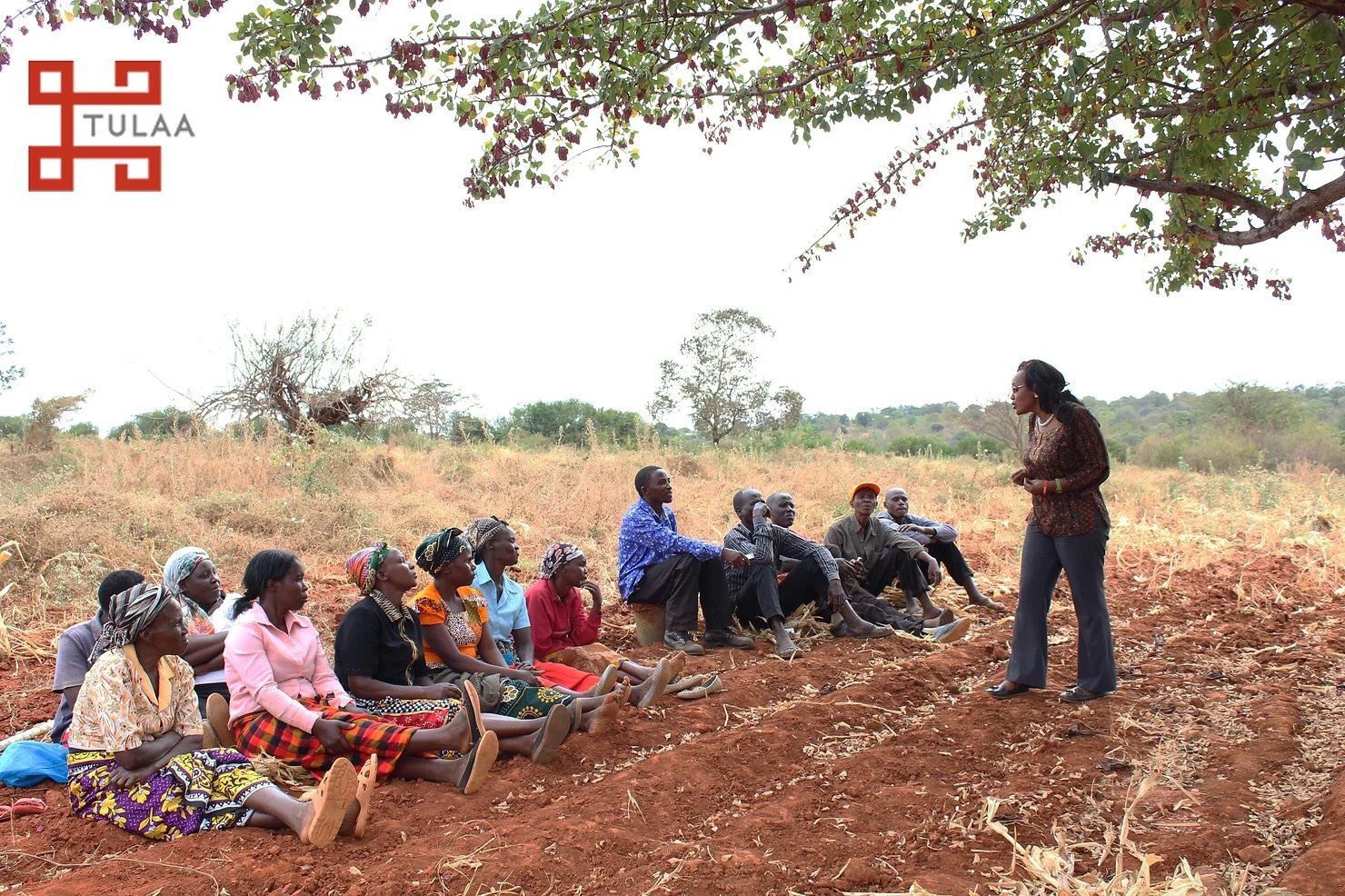A data scientist in Kenya pt.1
TL;DR;
I’m working for an AgTech startup called Tulaa for the next few months and will help them develop their data strategy
The agriculture sector in developing countries punches far below its weight due to a myriad of challenges (surprise, surprise!)
Although many players are trying to solve said issues, there still lack clear solutions for several problems including access to financing, cost of transport, and fair pricing of goods
In my last post, I mentioned that I was heading off to Kenya for a few months as a result of a happy intersection between an opportunity and my interests - but you may be wondering, what specifically am I going to do while I’m there (besides safaris and such). So here it is: I’m joining a fantastic social impact firm called Tulaa, whose mission is to create an end-to-end platform for firms in the agricultural sector to connect with smallholder farmers.
Some of our Agrovet partners in Molo, Kenya
Ok Tristan, neat, but why are you working with farmers and what does a consultant/data-scientist know about agriculture anyways? I’m glad you asked! The reason I, and many others, are working with smallholder farmers is that in many developing countries - Kenya included - smallholder farmers make up a very substantial segment of employment but due to many, many inefficiencies along the farming lifecycle, the agricultural sector still far underperforms in its contribution to individual welfare, and the overall economy, compared to agricultural sectors in more developed parts of the world. Stated more simply: what a farmer is able to produce and earn in Uganda or India does not remotely compare to what farmer earns in say, Japan, so there are plenty of opportunities to improve things.
Although this may not strike you to be particularly groundbreaking, consider for a moment the myriad of factors that contribute to these inefficiencies in the developing market farming. First, many farmers can’t get access to high quality (or even just decent) inputs (seeds, fertilizers, pesticides, fungicides and such). Second, even if they have access to said inputs, many simply can’t afford it and don’t have access to credit. Third, assuming they somehow get the inputs, many don’t know how to use them properly and sometimes inadvertently damage their land. Finally, even if they’re able to grow the crops, it’s not a given that they will get good sale value for their products as there are staggering price variances over time and locations.
Mind you, this is without taking into account that the farmers may be single parents; that their crops could fail because of a number of external factors such as droughts, blights or pests; that many farmers will face high transport cost of their crops to markets because of poor infrastructure; and the list goes on.
Nancy, one of our operatives, pitching Tulaa to farmers
Consequently, with so many issues to be dealt with, a whole alphabet soup of government, private sector, and social firms have risen up to address to some of the aforementioned challenges - One Acre Fund, Acumen, Dalberg to name just a few. However, even in my relatively short tenure in this sector, I’ve noticed there are a number issues that do not appear to have a clear consensus on the best solution. A few that I'm familiar with include:
Access to financing and credit scoring: Many farmers face difficulties in accessing credit and financing to help boost their productivity. Lenders, especially those in the private sector are quite wary of lending to smallholder farmers due to the myriad risks listed above, even in countries where they are incentivized to do so. Not only that, traditional lenders are often unequipped or unwilling to assess farmers as a distinct category, and as a result attempt to apply credit assessment methods used on urban-dwellers to determine default risk. Unsurprisingly, this is ineffective, either at calculating the risk accurately or providing results in a timely manner. The main culprit here, of course, is that many of these farmers have little or no prior credit history and, as anybody that has dabbled in credit modeling can tell you, the predictor of future credit performance is …. past credit performance. An interesting side effect of this market failure is that many unorthodox methodologies have sprung up to fill in this data gap such as psychometrics (the use of behavioral questionnaires to determine an individual's willingness and agency in set context), remote sensing (use of satellite and weather data to monitor the health of crops), and even mobile money usage habits (e.g. someone making frequent payments late at night may be indicative of dubious consumption).
Cost of transport: It’s no secret that the infrastructure of many developing countries is somewhat lacking. Poor infrastructure translates to higher costs of transport to the farmers eating away at their already feeble margins. Fortunately, some players in agricultural space are trying to address this directly such as Digital Green’s Loop program (full disclosure: I worked with the Loop team for a few months on this exact issue).
Fair pricing of goods: An interesting feature of the sale of crops for smallholder farmers is that, unlike in the US where there are established and listed market prices for agricultural products (see Chicago Mercantile Exchange), prices for the same crop in Kenya or India for example can fetch vastly different prices over time and location(k) - more, in my unscientific opinion, than could probably be reasonably explained by seasonality of crops alone. Governments and others players have taken different approaches to fix this - in India for example, the government has set up the Agmarket portal which provides daily market-level maximum, minimum and, modal prices for over 200 commodities.
So where does Tulaa fit in all this? Stick around for part 2 to find out!

